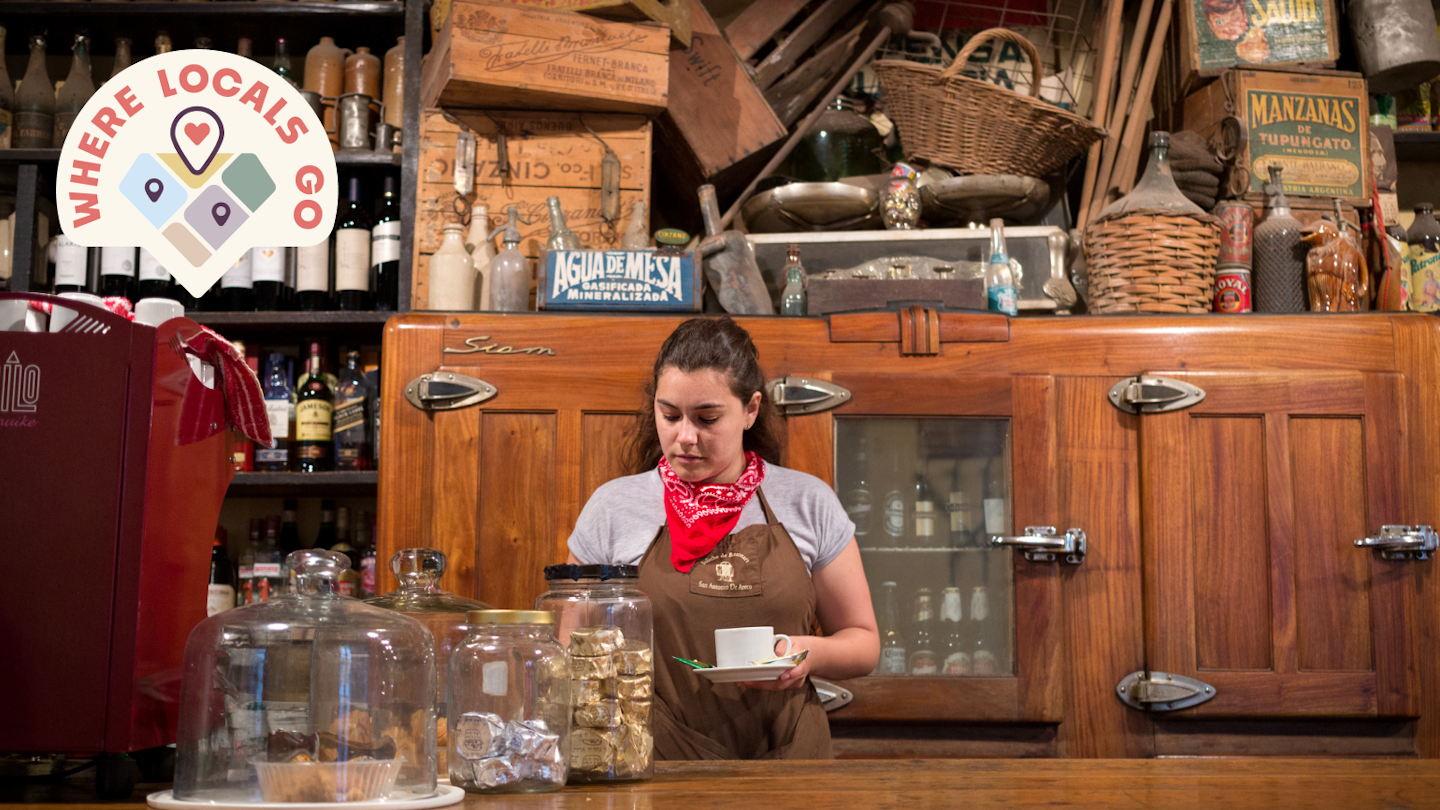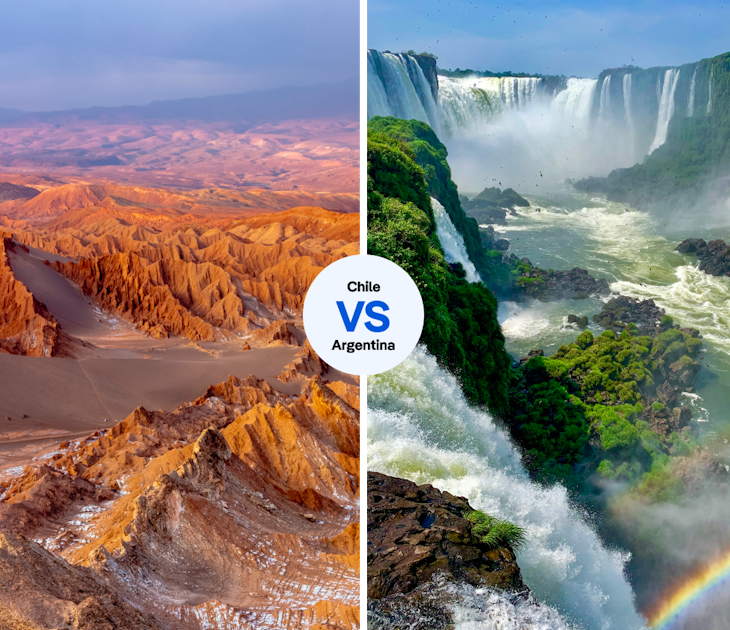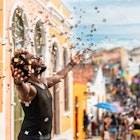Where Locals Go features under-the-radar holiday destinations that are often overlooked by visitors but cherished by locals. Here, we ask three experts on Argentina for their top picks.
From the wineries of Mendoza to the sophistication of Buenos Aires to the splendor of Igazú Falls, Argentina boasts a range of landscapes and experiences that make it one of the most beloved destinations in the world. But what if you want to plan a trip that strays from the typical tourist track? We asked three Argentina-based experts to share where they themselves take their vacations.

Historic bars and gaucho culture: San Antonio de Areco
Federico Perelmuter is a freelance writer and critic who lives in Buenos Aires.
Arriving in San Antonio de Areco from the bustling city of Buenos Aires always feels like stepping into a different world.
Located two hours from the capital by car, this small rural town has colonial architecture and cobblestone streets sparkling under the sun that make it feel timeless. Nicknamed the “cradle of tradition,” the Pampas town was a vibrant hub of gaucho life during the 19th century, beautifully depicted in the Ricardo Güiraldes’ novel Don Segundo Sombra. To delve deeper into gaucho culture, a visit to the Güiraldes Museum is a must. Housed in Güiraldes’ former family estate, the museum showcases well-preserved artifacts representing key elements of gaucho culture, from boleadoras (weapons used to ensnare cattle) to pulperías (grocery stores that also functioned as bars).
One of my favorite things to do is sit in one of the town’s sunny squares while indulging in alfajores from La Olla de Cobre, Areco’s renowned chocolate shop. For accommodation, I highly recommend the Santa Ana Boutique Hostel: centrally located, with beautiful interiors and reasonable prices. When it comes to dining, a five-minute drive from town will take you to Restaurante Histórico Lacarra, where you can savor delicious, classically Argentine food while enjoying the ambiance of an old townhouse. And, of course, no visit to San Antonio de Areco is complete without a stop at the legendary Boliche de Bessonart Bar for a Fernet Cola. The historic bar (over 200 years old) wouldn’t look out of place in a Western movie, and is a great place to mix with local families, gauchos and other tourists.

A 3.5-hour flight – and a world away – from BA: Ushuaia
Buenos Aires–based Sorrel Moseley-Williams is a British travel, food and drink journalist and sommelier who has been living in Argentina since 2006.
Breathtaking Patagonian wilderness surrounds Ushuaia, a 3.5-hour flight south of Buenos Aires.
This water lover adores staying at Arakur, located atop Cerro Alarkén, for its fabulous in/out swimming pool and 360º panoramas. Conveniently, the Vinos al Sur wine fair takes place here, too. In addition to strolling through Alarkén’s native forest, you’ll find more-adventurous terrains to discover in Parque Nacional Tierra del Fuego, where snow-capped mountains, frigid waters and blustery lenga forests always blow away my Buenos Aires cobwebs. After working up an appetite, my reward is the Tierra del Fuego–led tasting menu at Kalma, where the star dish is merluza negra (Patagonian toothfish).
For an escape on top of an escape, I recently visited Estancia Harberton for the first time. Only a 90-minute drive from Ushuaia, this historic ranch – founded in 1886 and now led by Abby Goodall, the fifth generation of the Bridges family – is a national treasure. After enjoying merinda (maté tea with snacks), I took a dive into the Museo Acatashun, which boasts South American’s best collection of marine animals and birds from the southernmost region. The remoteness of Harberton adds an otherworldly charm. On my next visit, I plan to book a cottage along the Beagle Canal, on the extreme southern tip, for an even more extraordinary escape.

Amazing wildlife in pristine wetlands: Iberá National Park
Diego Jemio is an arts and culture writer from Buenos Aires.
I first traveled to Corrientes Province 10 years ago to attend the Fiesta Nacional del Chamamé, a vibrant January festival in the northeast that celebrates chamamé, the ancestral music of the indigenous Guaraní who live in Argentina, Brazil, Paraguay and Uruguay. Through its songs, chamamé weaves tales of the region’s wetlands and its teeming wildlife. Inspired by the festival, I felt compelled to go further into the depths of the province, leading me to the renowned berá National Park, in an area once inhabited by the Guaraní people. Encompassing an astonishing 3.2 million acres (1.3 million hectares), these restored wetlands proudly stand as one of the largest freshwater reserves on our planet. It’s one of my favorite places in Argentina to visit.
While numerous towns and villages provide access to Iberá, I find myself drawn time and time again to the quaint town of Colonia Carlos Pellegrini, in the southeast of Corrientes. With a population of just 1000, this peaceful town rests on the shores of the Iberá Lagoon. My favorite activity here is a simple canoe ride along the waterways, particularly in the morning or early afternoon. In this tranquil oasis, herons gracefully glide through the air, yacare caimans bask contentedly (fear not; they are well fed) and furry capybaras roam the shore. In Colonia Carlos Pellegrini, you’ll find many tour companies offering guided boat and kayak tours of the lagoon.
When it comes to satisfying my taste buds in the village, my heart belongs to Jajetopa, a small restaurant owned by the talented cook Sara Medina. At this culinary gem, Medina presents simple yet delightful dishes, often announced on a blackboard. On occasion, the menu features mbaipu – a Guaraní delicacy crafted with chicken, manioc flour and lamb stew – which never fails to impress me. I usually stay at the Casa de Esteros hotel, where you can curl up beside a crackling bonfire in the hotel’s expansive gardens at night.
A word of advice: remember to arm yourself with mosquito repellent, for as the sun sets, these tiny creatures can become quite voracious in these parts.














